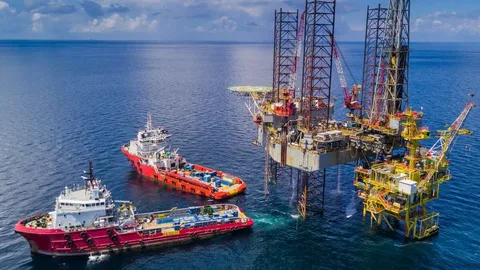Introduction
The US Offshore Drilling Rigs Market is witnessing renewed vigor as the nation strengthens its offshore exploration and production (E&P) activities to enhance energy security. Offshore rigs play a crucial role in extracting oil and gas from deepwater and ultra-deepwater reserves, particularly in regions such as the Gulf of Mexico. Following years of volatility, rising crude oil prices, increased capital expenditure by energy companies, and advancements in drilling technology are fueling market growth. The industry’s revival aligns with the global push for efficient and sustainable energy production while balancing environmental and operational safety.
Market Drivers
The primary driver for the US offshore drilling rigs market is the recovery of oil prices, which has reignited offshore exploration investments. Energy companies are resuming suspended projects and initiating new deepwater drilling campaigns, particularly in the Gulf of Mexico — one of the world’s most resource-rich basins.
Technological innovation in rig design, automation, and data analytics is enhancing operational efficiency and safety. The rise of next-generation semi-submersibles and drillships with digital monitoring capabilities is improving productivity and reducing downtime.
Additionally, government support for expanding domestic oil production to reduce reliance on imports continues to drive rig demand. The growing focus on subsea developments and field extensions also contributes significantly to the market’s upward trajectory.
Market Challenges
Despite the promising rebound, the offshore drilling rigs market faces challenges, including high operational costs and project risks associated with deepwater exploration. Offshore drilling involves substantial capital expenditure and long project timelines, which can deter investment during periods of oil price instability.
Stringent environmental regulations and pressure to reduce carbon emissions further complicate operations. The transition toward cleaner energy sources also places scrutiny on offshore oil production activities.
In addition, the shortage of skilled workforce and technical complexity involved in maintaining modern rigs add to operational challenges. Supply chain disruptions, particularly in equipment manufacturing and logistics, can impact project schedules and profitability.
Market Opportunities
The market presents strong opportunities in technological advancement and sustainable offshore operations. Automation, remote monitoring, and predictive maintenance solutions are transforming rig management, enhancing safety and reducing costs.
The expansion of ultra-deepwater exploration — driven by new discoveries and improved seismic imaging — provides major growth prospects.
Collaborations between rig operators and energy companies to develop low-emission rigs powered by hybrid or alternative fuels are gaining momentum.
Furthermore, digital twin technology and data-driven drilling optimization are unlocking new efficiency standards, offering a competitive edge to innovative players in the market.
Regional Insights
Regionally, the Gulf of Mexico remains the nucleus of offshore drilling activity in the United States, accounting for a major share of exploration and production operations. The region’s vast reserves, mature infrastructure, and established service network make it a preferred area for investment.
The Atlantic and Pacific coastlines show limited activity due to regulatory restrictions and environmental considerations, while Alaska presents long-term potential for Arctic exploration under stringent ecological controls.
Overall, the Gulf Coast states — particularly Texas and Louisiana — drive the market’s economic and logistical ecosystem, hosting key drilling contractors, suppliers, and shipyards.
Future Outlook
The future of the US offshore drilling rigs market is expected to be characterized by digitalization, sustainability, and resilience. Advanced rig automation, AI-driven analytics, and real-time data monitoring will continue to redefine offshore operations.
Energy transition strategies will push the industry toward greener technologies, with hybrid-powered rigs and emission-control systems becoming mainstream.
Moreover, as global energy demand continues to rise, offshore exploration will remain an essential part of the US energy portfolio. Continuous investment in technological innovation and environmental compliance will shape the next generation of offshore rigs.
Conclusion
The US Offshore Drilling Rigs Market is on a transformative journey toward greater efficiency, sustainability, and operational excellence. While economic volatility and environmental scrutiny remain challenges, renewed exploration activities and digital advancements are fueling optimism. The integration of intelligent systems, safer designs, and sustainable energy practices marks a new chapter for offshore drilling. As the US strengthens its position in the global energy arena, offshore rigs will remain the backbone of its exploration capability and energy resilience.

